What’s Up?
If you would like to become a better bird photographer, consider joining me on the 2023 San Diego IPT. Details are at the end of this blog post.
Anita North and I fly to Iceland at 9:00pm tonight, Monday 10 July 2023. Wherever you are and whatever you are doing, I hope that you too have a great day. If I can get online from above the Arctic Circle, I will try to post every few days. Otherwise, much love and I will be in touch when I get back to civilization.
Please remember to use the B&H and Amazon links that are found on most blog pages and to use the BIRDSASART discount code at checkout when purchasing your new gear from Bedfords to get 3% back on your credit card and enjoy free second-day air FedEx. Please, also, consider joining a BAA IPT. You will be amazed at how much you will learn!
You can find some great photo accessories (and necessities, like surf booties!) on Amazon by clicking on the Stuff tab on the orange/yellow menu bar above. On a related note, it would be extremely helpful if blog-folks who, like me, spend too much money on Amazon, would get in the habit of clicking on the Amazon logo link on the right side of each blog post when they shop online. As you might expect, doing so will not cost you a single penny, but would be appreciated tremendously by yours truly. And doing so works seamlessly with your Amazon Prime account.
If an item — a Delkin flash card, or a tripod head — for example, that is available from B&H and/or Bedfords, is also available in the BAA Online Store, it would be great, and greatly appreciated, if you would opt to purchase from us. We will match any price. Please remember also to use my B&H affiliate links or to earn 3% cash back at Bedfords by using the BIRDSASART discount code at checkout for your major gear purchases. Doing either often earns you free guides and/or discounts. And always earns my great appreciation.
|
|
|
This Photo Mechanic screen capture represents the un-cropped raw file. The approximate crop is shown. Image #1: Brown Pelican with bill pouch inflated |
The Serious Operator Framing Error
I had never seen this silly pelican behavior before and probably never will again. The bird looked as if it were doing its best to blow a huge bubble — as if a pelican could blow a bubble. It held the pose for barely more than one second. Working vertically and using Tracking: Zone the system found the bird’s eye easily and instantly. I was torn between re-framing the image to include the entire head and bill in the frame or pushing the shutter button and getting at least one halfway decent image. I knew that Tracking: Zone would have held focus had I raised the lens but I feared that the instant would be gone if I had opted to re-frame.
So, I went for the one in hand; the result was the badly mis-framed image that you see in the original capture above. Just a single frame. In retrospect, I would have had room in the frame for the entire head and bill had I pointed the lens up. But I am not sure that I would have had the time.
|
|
|
This image was created on 16 January 2023 at La Jolla, CA. Standing at full height on the downhill sidewalk spot, I used the Robus RC-5558-3 Vantage Series 3 Carbon Fiber Tripod topped by the Levered-Clamp FlexShooter Pro, I used the Sony FE 600mm f/4 GM OSS lens with the Sony FE 1.4x Teleconverter, and The One, the Sony Alpha 1 Mirrorless Digital Camera.. Exposure was determined using Zebra technology: ISO 2000: 1/640 second at f/5.6 (wide open) in Manual mode. When evaluated in RawDigger, the raw file brightness was determined to be a bit brighter than perfect, not quite dead solid perfect. AWB at 8:15:04am a cloudy morning with a rare-for-San Diego drizzle. Tracking: Zone with Bird Face/Eye detection enabled performed perfectly. Be sure to click on the image to enjoy the larger, sharper, high-res version. Version I/Image #1A: Brown Pelican with bill pouch inflated |
Version I
This is the Kodachrome 64 version. Aside from the crop, it is not a whole lot different from the raw file.
|
|
|
This image was created on 16 January 2023 at La Jolla, CA. Standing at full height on the downhill sidewalk spot, I used the Robus RC-5558-3 Vantage Series 3 Carbon Fiber Tripod topped by the Levered-Clamp FlexShooter Pro, I used the Sony FE 600mm f/4 GM OSS lens with the Sony FE 1.4x Teleconverter, and The One, the Sony Alpha 1 Mirrorless Digital Camera.. Exposure was determined using Zebra technology: ISO 2000: 1/640 second at f/5.6 (wide open) in Manual mode. When evaluated in RawDigger, the raw file brightness was determined to be a bit brighter than perfect, not quite dead solid perfect. AWB at 8:15:04am a cloudy morning with a rare-for-San Diego drizzle. Tracking: Zone with Bird Face/Eye detection enabled performed perfectly. Be sure to click on the image to enjoy the larger, sharper, high-res version. Version II/Image #1B: Brown Pelican with bill pouch inflated |
Version II
This is the Velvia version. As compared to the raw file, the color and contrast have been juiced up. Note especially that I brought up the green and aqua tones in the water background using Color Mixer. I had not done that with Version I.
|
|
Shooting slide film was expensive, wasteful, and bad for the environment on many counts |
Film
For new folks who have used only digital, know that before the turn of the century most nature photographers used color slide film. The original classic was Kodachrome 25. That, however, was before my time as I started late, in August 1983. The standard by then was Kodachrome 64. The “25” and the “64” refer to the ISOs! Kodachrome 64 was featured low contrast and flat colors, even when the sun was shining. In 1990, Fuji introduced Velvia 50 slide film. It featured rich, vibrant colors. We would shoot the film one stop to dark and have it push processed at ISO 100. I loved the stuff. A single roll cost more than $12.00 in 1995. After you finished a role of 36 exposures, you had to send the film to the lab to be developed. The processing then cost about $8.00. Or more. After a few days or a week, you would get a box with 36 or 37 slides. You examined them on a lightbox with a handheld magnifier called a loupe. Most of the slides would wind up in the trash.
Getting the right exposure with slide film was very difficult. On sunny days, the WHITEs were always over-exposed. The photographer had zero control over the look of the image. Though I was slow to embrace digital capture, I now wish that I had never heard the word “film.” That said, almost all of my BBC Wildlife Photographer of the Year-honored images were created on Fuji Velvia (pushed one stop).
If you shot film, feel free to share your thoughts or to reminisce by leaving a comment. BTW, a roll of Fuji Velvia slide film costs $33.95!
Your Call
After clicking on each image to enlarge it, you are invited to leave a comment letting us know which version you like best and why you made your choice.
The 2023/2024 San Diego Brown Pelicans (and more!) IPT
San Diego IPT #3: 4 1/2 DAYS: TUES 23 JAN thru the morning session on SAT 27 JAN 2024: $2699.00. Deposit: $699.00. Limit: 6 photographers/Openings: 5.
Please e-mail for information on personalized pre- and post-IPT morning sessions.
Join me in San Diego to photograph the spectacular breeding plumage Brown Pelicans with their fire-engine red and olive green bill pouches; Brandt’s (nesting) and Double-crested Cormorants; breeding plumage Wood and Ring-necked Ducks; other duck species possible including Lesser Scaup, Redhead, Northern Shoveler and Surf Scoter; a variety of gulls including Western, California, and the gorgeous Heermann’s, all in full breeding plumage; shorebirds including Marbled Godwit, Willet, Sanderling and Black-bellied Plover; many others are possible including Least, Western, and Spotted Sandpiper, Whimbrel, Black and Ruddy Turnstone, Semipalmated Plover, and Surfbird; Harbor Seals and California Sea Lions (both depending on the current regulations and restrictions). And as you can see by studying the IPT cards, there are some nice bird-scape and landscape opportunities as well. Not to mention a ton of excellent flight photography opportunities and instruction.
I discovered some really neat new spots on my 2022/23 visit. As a result, the first and second IPTs may include an afternoon or two of landscape photography.
Please note: where permitted and on occasion, ducks and gulls may be attracted (or re-located) with offerings of grains or healthy bread.
|
|
|
San Diego offers a wealth of very attractive natural history subjects, including and especially the Pacific race of California Brown Pelican. With annual visits spanning more than four decades, I have lots of photographic experience there … Click on the composite to enjoy a larger version. |
Learning Exposure, Whether You Like It Or Not
Whether you like it or not, we will be beating the subject of exposure like a dead horse. In every new situation, you will hear my thoughts on exposure along with my thoughts on both Nikon and Canon histograms and SONY Zebras. Whether you like it or not, you will learn to work in manual mode so that you can get the right exposure every time (as long as a bird gives you ten seconds with the light constant). Or two seconds with SONY zebras … And you will learn what to do when the light is changing constantly. What you learn about exposure will be one of the great takeaways on every IPT.
|
|
|
Though the pelicans will be the stars of the show on this IPT, there will be many other handsome and captivating subjects in wonderful settings. Click on the composite to enjoy a larger version. |
It Ain’t Just Pelicans
With gorgeous subjects just sitting there waiting to have their pictures taken, photographing the pelicans on the cliffs is about as easy as nature photography gets. With the winds from the east almost every morning, there is usually some excellent flight photography, at times with 70-200mm lenses! And the pelicans are almost always doing something interesting: preening, scratching, bill pouch cleaning, or squabbling. And then there are those crazy head throws that are thought to be a form of intra-flock communication. You will be guided as to how to make the best of those opportunities. Depending on the weather, the local conditions, and the tides, there are a variety of other fabulous photo chances available in and around San Diego. Each IPT will include one or two duck sessions.
|
Did I mention that there are lots of great birds and natural history subjects in San Diego in winter? Click on the composite to enjoy a larger version. |
The San Diego Details
These IPTs will include four or five 3-hour morning photo sessions, three or four 1 1/2-hour afternoon photo sessions, and three or four working brunches that will include image review and Photoshop sessions. On rare cloudy days, we may — at the leader’s discretion, stay out in the morning for a long session and skip that afternoon shoot. To ensure early starts, breakfasts will be your responsibility. And so that we can get some sleep, dinners will be on your own as well. In the extremely unlikely event that Goldfish Point is closed due to local ordinance (or whimsy) — that has never happened in the past fifty years, I will of course do my very best to maximize our photographic opportunities.
|
|
|
San Diego offers a wealth of very attractive natural history subjects, including and especially the Pacific race of California Brown Pelican. With annual visits spanning more than four decades, I have lots of photographic experience there … Click on the composite to enjoy a larger version. |
Deposit Info
A $699 deposit is required to hold your slot for one of the 2023/2024 San Diego IPTs. You can send a check (made out to “BIRDS AS ART”) to us here: BIRDS AS ART, PO Box 7245, Indian Lake Estates, FL, 33855, or call Jim or Jennifer at the office with a credit card at 863-692-0906. Your balance, payable only by check, is due three months before the trip.
|
Variety is surely the spice of life in San Diego. Click on the composite to enjoy a larger version. |
Getting Up Early and Staying Out Late
On all BIRDS AS ART IPTS including and especially the San Diego IPT, we get into the field early to take advantage of unique and often spectacular lighting conditions and we stay out late to maximize the chances of killer light and glorious sunset silhouette situations. We often arrive at the cliffs a full hour before anyone else shows up to check out the landscape and seascape opportunities.
Typos
With all blog posts, feel free to e-mail or to leave a comment regarding any typos or errors.

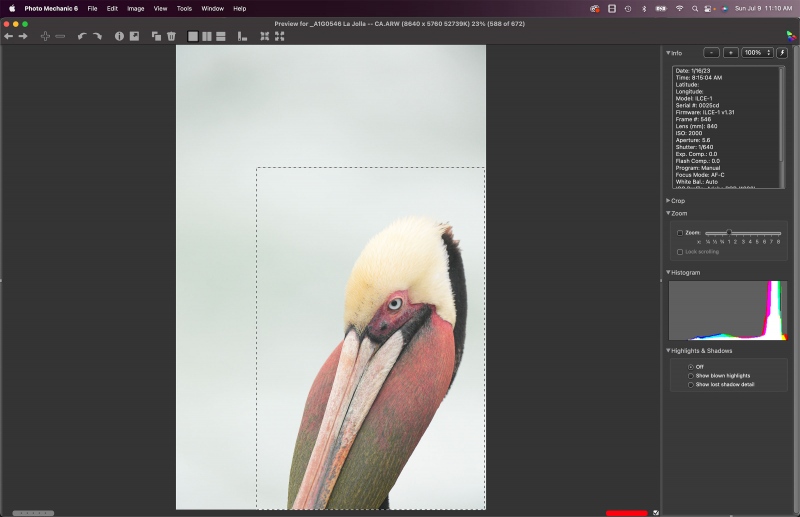
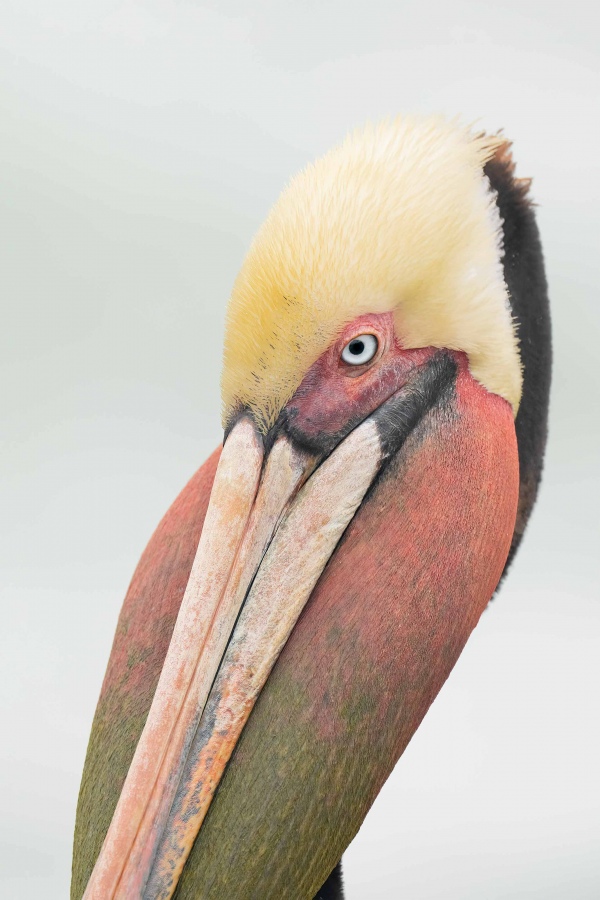
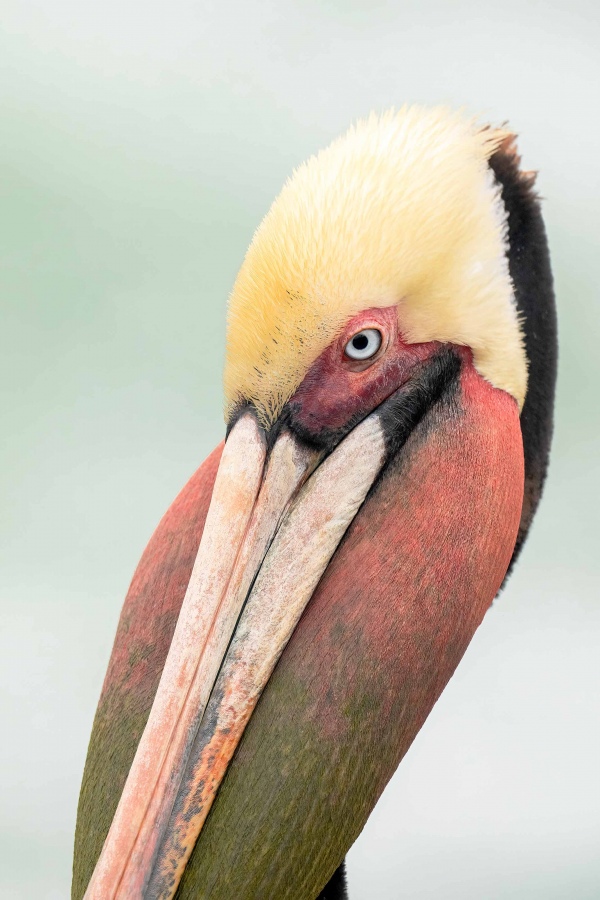
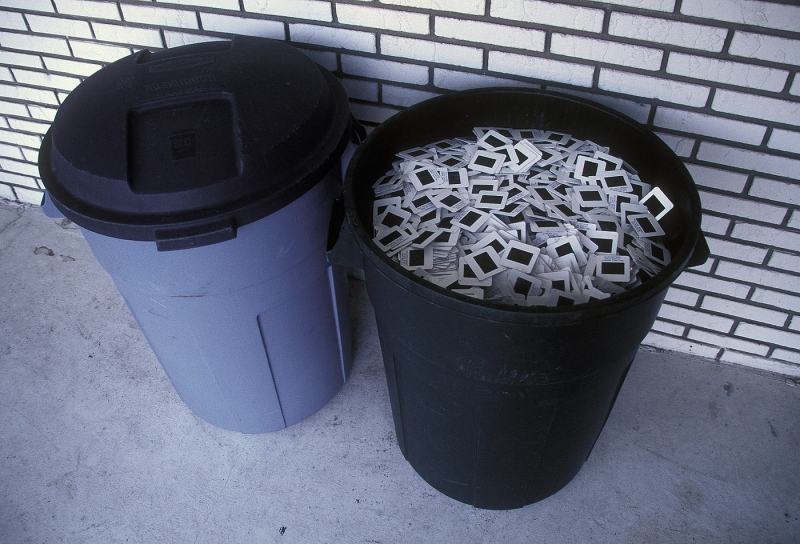
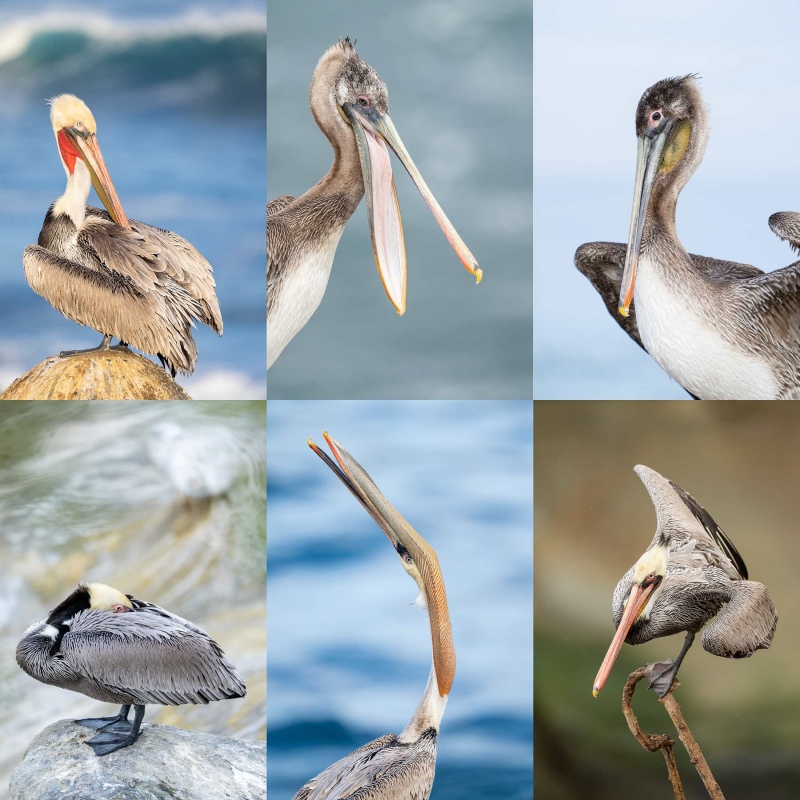
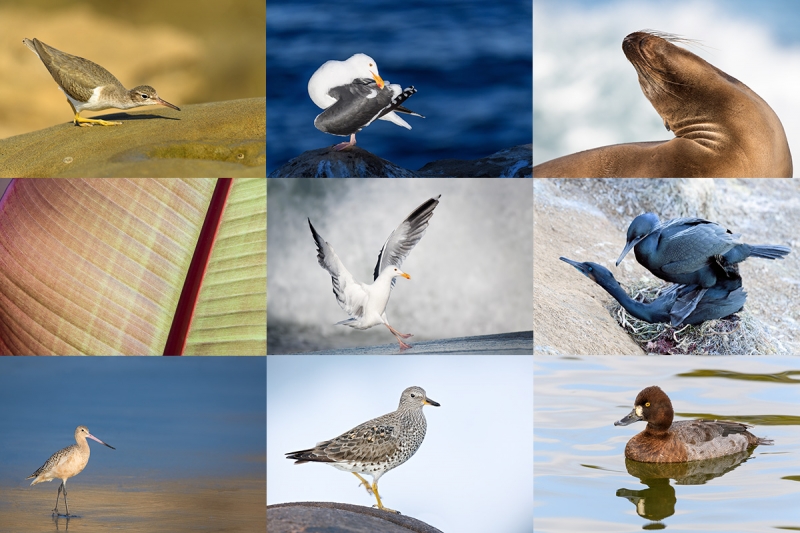

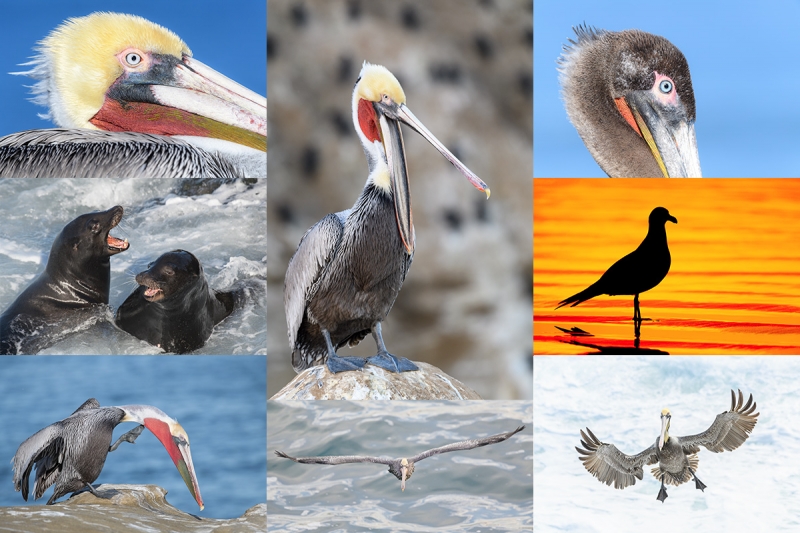














!
I started with film in the 1950s, Ilford FP3 b&w, I think 80 ASA as we called ISO. I developed the fim and made my own prints in my darkroom aka my bedroom. The fastest b&w film I used was a Kodak product of 400 ASA. Switched to Kodachrome slides in the 1960s, digital in the early 2000s. Obviously, I’ll never go back to film. Bon voyage, Artie and Anita.
Lots of advantages to digital (and even more with mirrorless), but I think you’re being unfair with your K64 and RVP approximations in overcast conditions. K64 was actually considered very saturated until RVP was introduced, and many people (though not you or me) thought RVP oversaturated. Surely you have some family-jewel RVP California Pelicans with brighter colors–in fact, you do, along with many other highly saturated images, as I just proved by paging through the 1998 hardbound edition of The Art of Bird Photography! 🙂
You are of course, correct, Cliff. Thanks for the plug.
with love, a
Another issue with slide film is that you never knew for sure that you got the shot until you examined the processed slides. In the 1980s-1990s more than 350 of my bowhunting feature articles were published in outdoor magazines, including Field & Stream and Outdoor Life. They were illustrated with my slides. I’d come back from a hunting trip with 35-40 rolls of exposed Fuji film, unsure if I had ANYTHING. Talk about anxiety!
Amazingly enough, my Canon cameras worked just fine and I never had a “dud” roll.
When digital came on the scene, I judged that it was a fad that would not last long.
Yeah….
Good stuff. I once shot seven rolls of the same bird, a juvenile Red-necked Phalarope swimming around in a puddle at Jones Beach, Long Island, NY. I gave them to the lab on Staten Island. When they came back, all the rolls were clear acetate with no images on them. They said that they would replace the film but not the cost of the processing! I believe that that work was done by the Kodak lab in New Jersey, possibly in Fairlawn …
with love, artie
While many of you were switching to digital, I was only beginning dabbling in bird photography and started with a Minolta x570 and slides, this in 2004. In one full year of using slides I had 2 or 3 marginal “keepers” if judged by today’s standards!
For a really fun read, check out this old BAA Bulletin from September 2001 – how times have changed even with digital! https://www.birdsasart.com/bn56.htm
Thanks, Dan. One the way to Iceland with Kevin Hice.
with love, a
ps: I finally followed the link. It was pretty funny stuff!
For the image, I prefer the “Velvia” interpretation but then again, it was wonderful for landscape work (not so much for portraiture). The only things I miss about slides/film are the nostalgia and quasi-magical nature of the process. It’s akin to the longing for the era of “muscle cars”, “tube amplifiers”, etc. when it’s clear that modern technologies are generally more reliable and offer tremendous advantages albeit with their own unique challenges. Safe travels, guru.
Velvia, of course!
I bought my first camera in 1979 while in high school. I filled out a mail order form in the rear of popular photography magazine and mailed my 300 bucks to some store in NYC. Many weeks later I received my beloved Minolta XG-7. All the money I had in my life.
Because I was working for my school’s newspaper, I was able to use the dark room at the Morning Call newspaper in Allentown, Pa. and got a taste (and smell) of film developing.
In 1998 I received a 1 mp ricoh digital camera as a gift on a company trip to France. I thought what’s this piece of junk. Threw it in a drawer and never thought about it for a year. I stumbled on it one day opened it up, took a shot, and was astounded at the image quality. It was as if you couldn’t take a bad shot. So I turned digital near the end of 1999, but still have my Minolta film camera. It still works too!
FILM … yes I remember it well, mailing your rolls of Fuji to the lab, waiting a week or so to get the results in the mail, opening the box of slides in the truck and giving them a quick look against the sky to see if you had any keepers, and then the final look with a loupe on the light table at home. A half dozen keepers out of 36 was considered excellent. The good old days, right? I changed to digital in 2000 after 40 years of slide film and have never looked back. In my opinion the digital age is truly the golden age of photography!
I agree, Larry. But only 100% I switched in 2001 after 18 years with film 🙁
with love, a
Slide film has certainly become very expensive the past few years. This year alone Fuji did a near 40% hike on slides. We still see people buying and shooting it at our lab.
Machine-gun Mike. It is hard to believe. For me, digital is 1,000,000 times better.
with love, a
100% agree for wildlife photography. I couldn’t imagine shooting film compared to what the A1 can do these days.